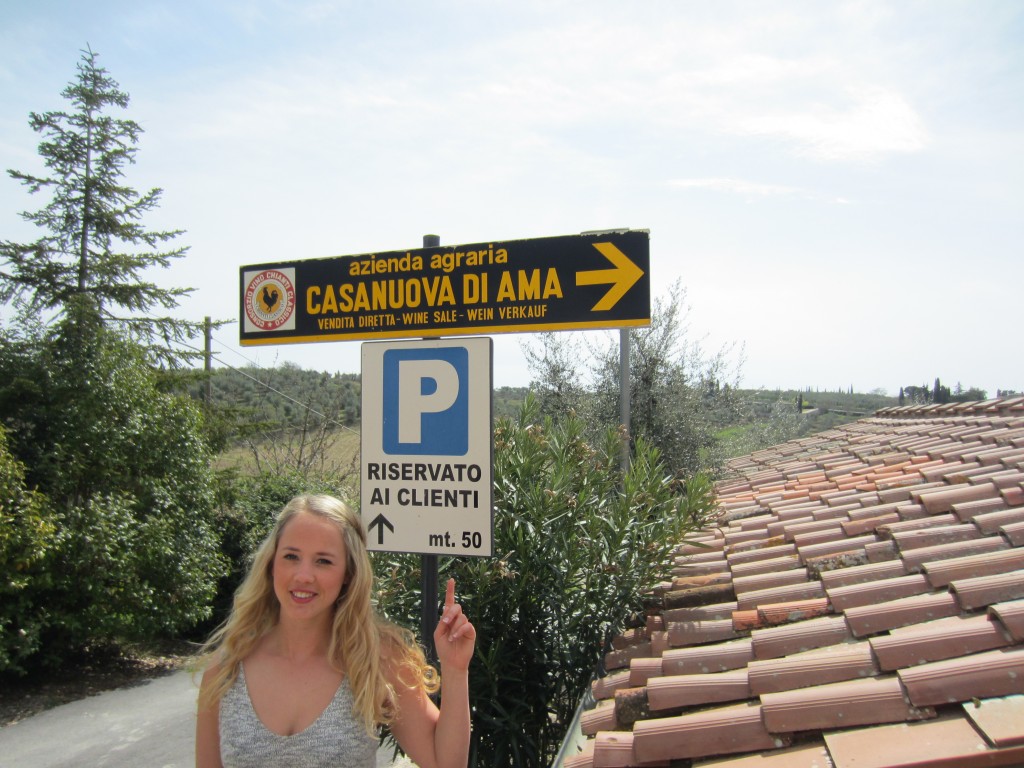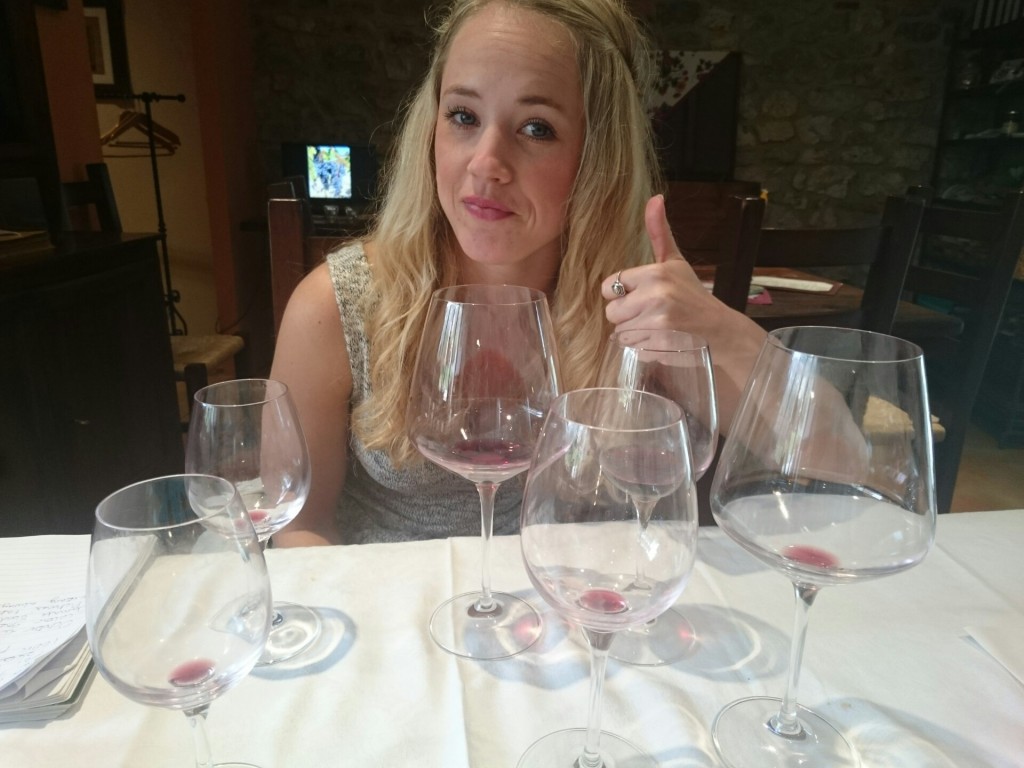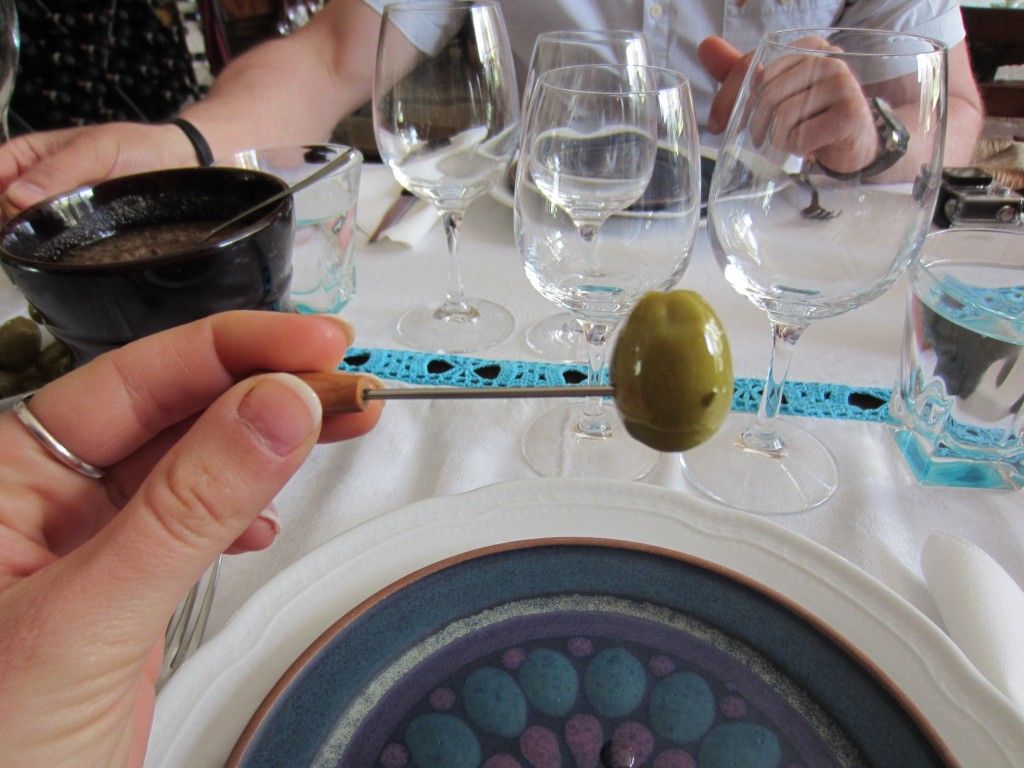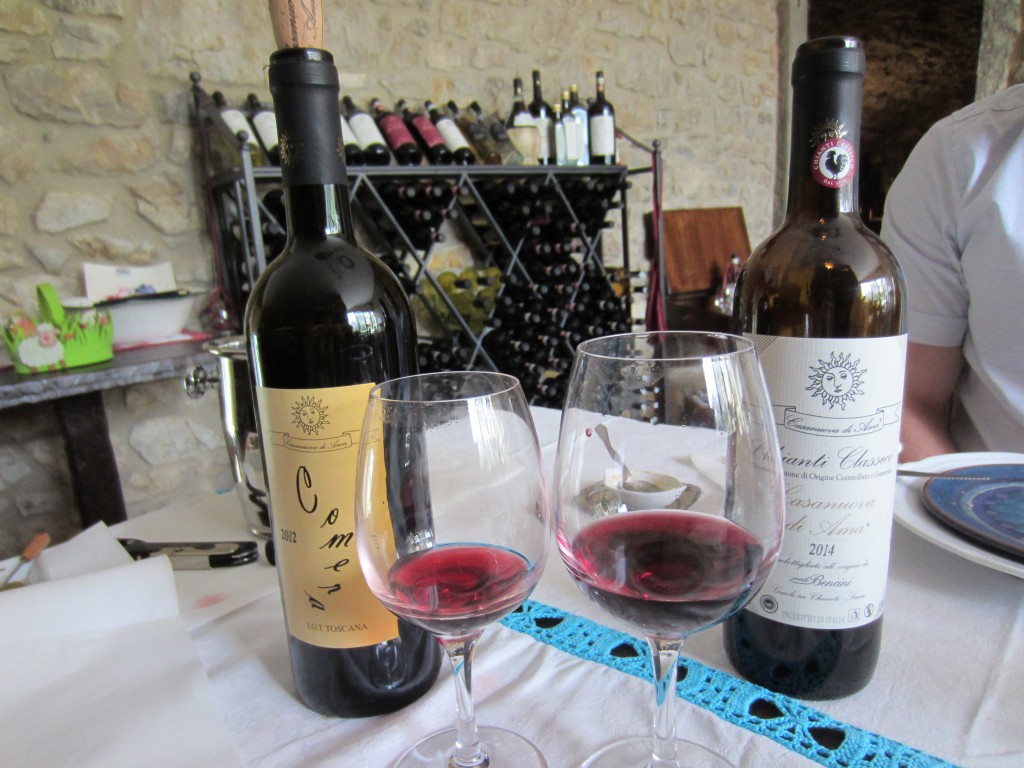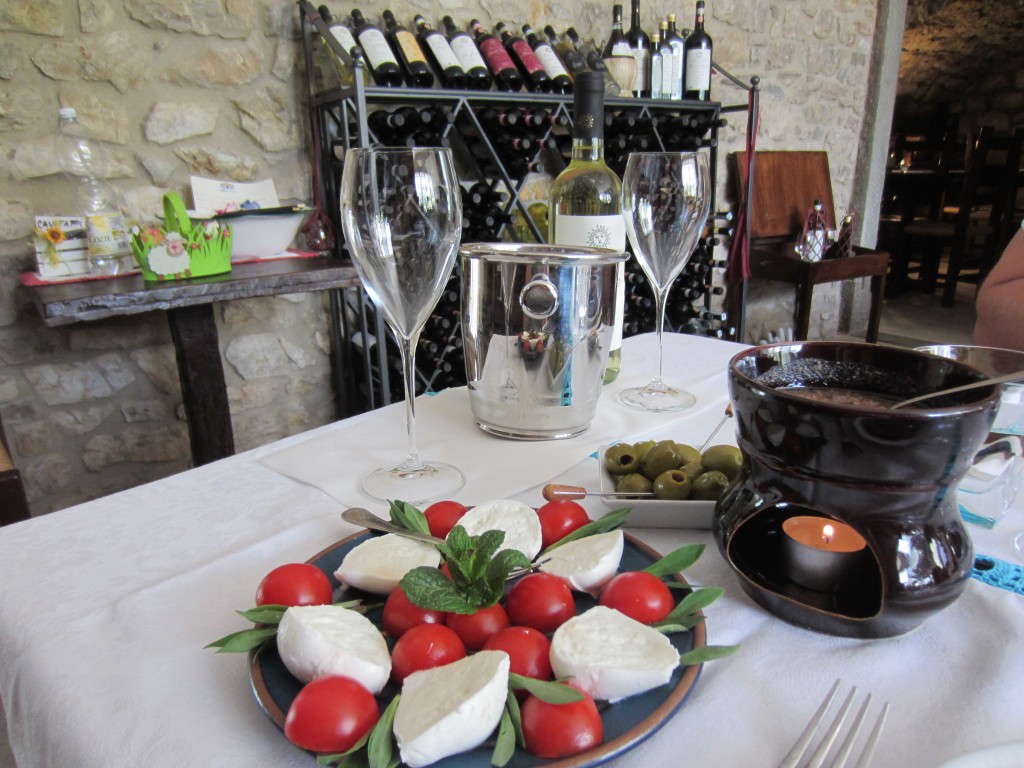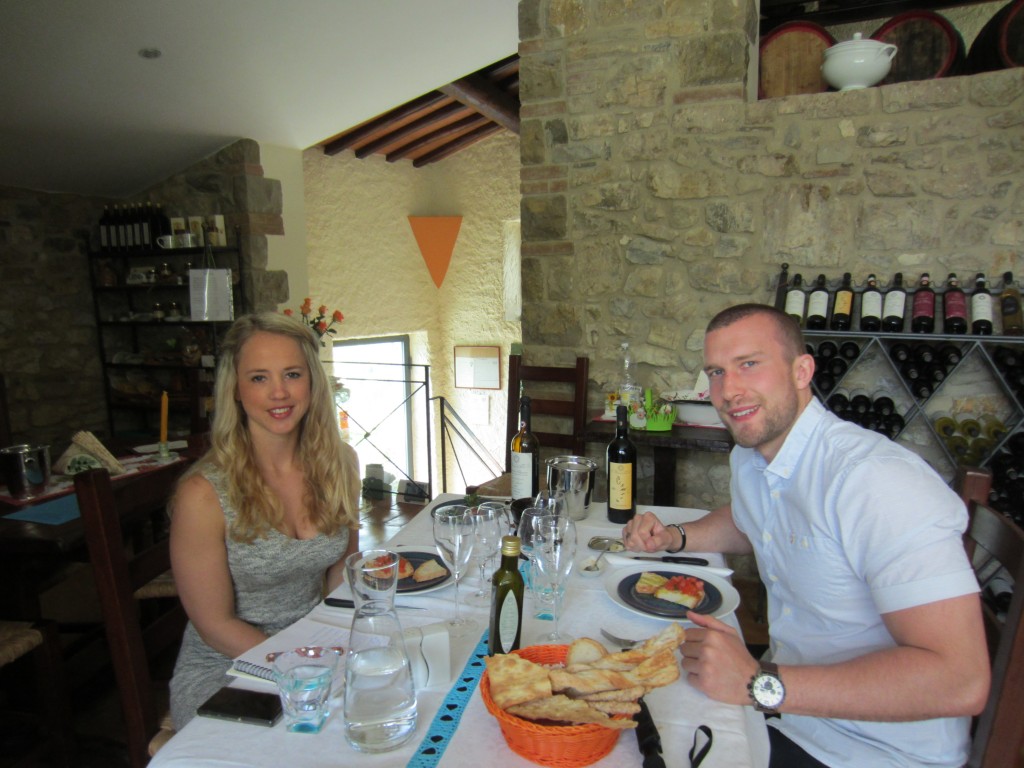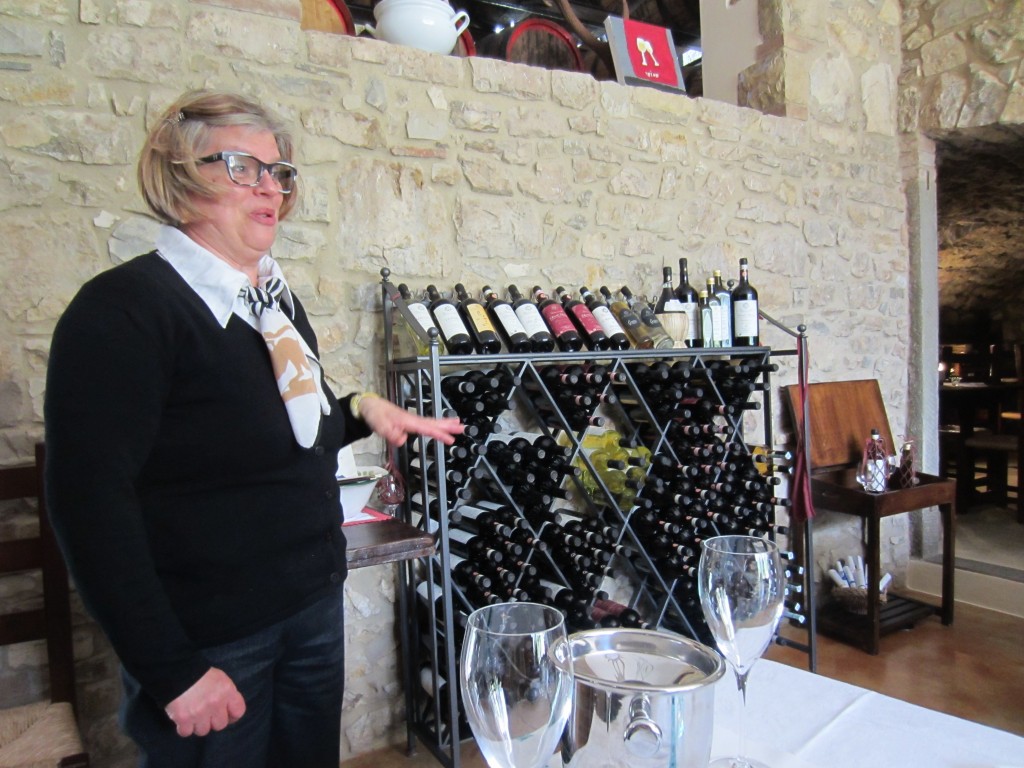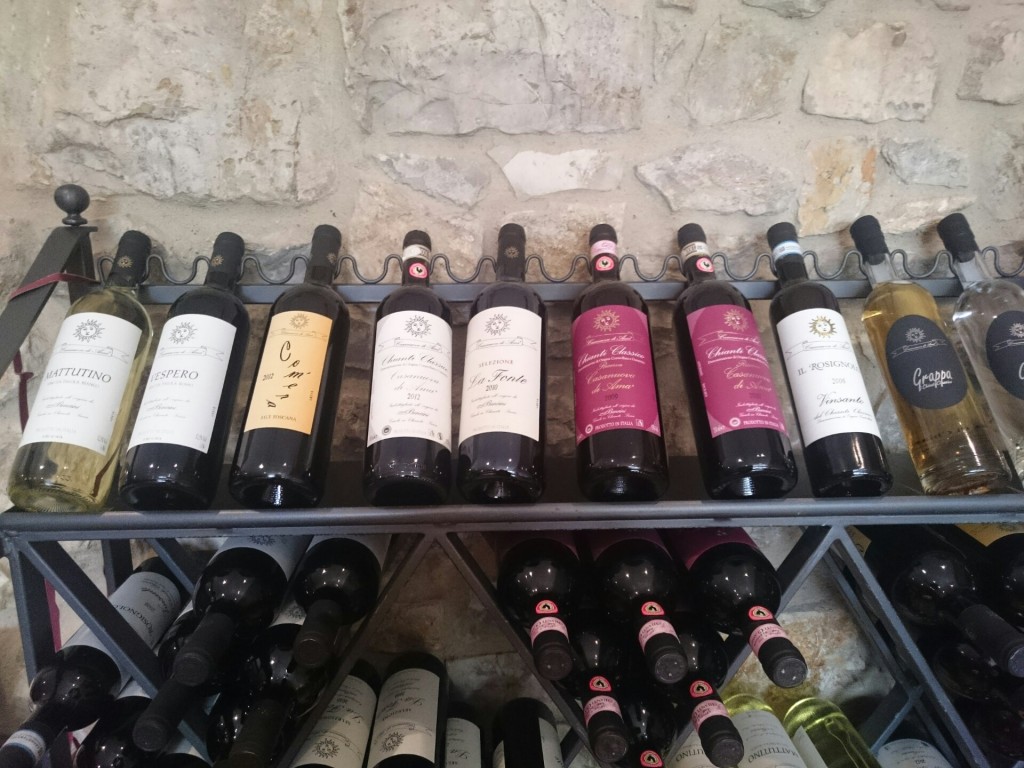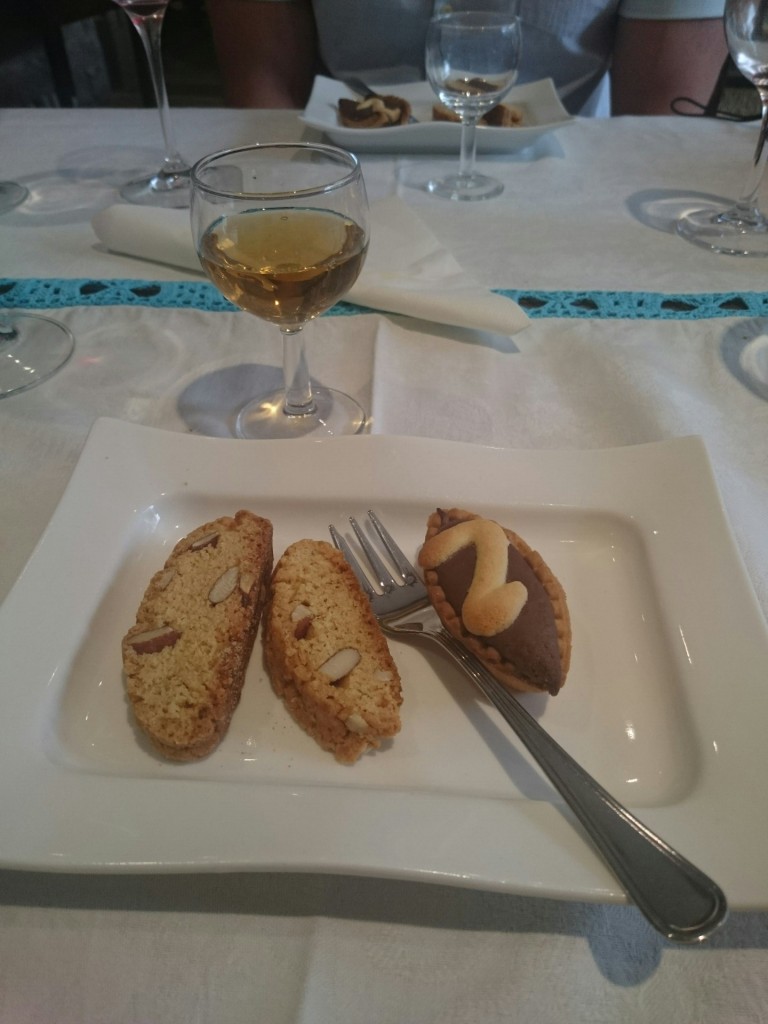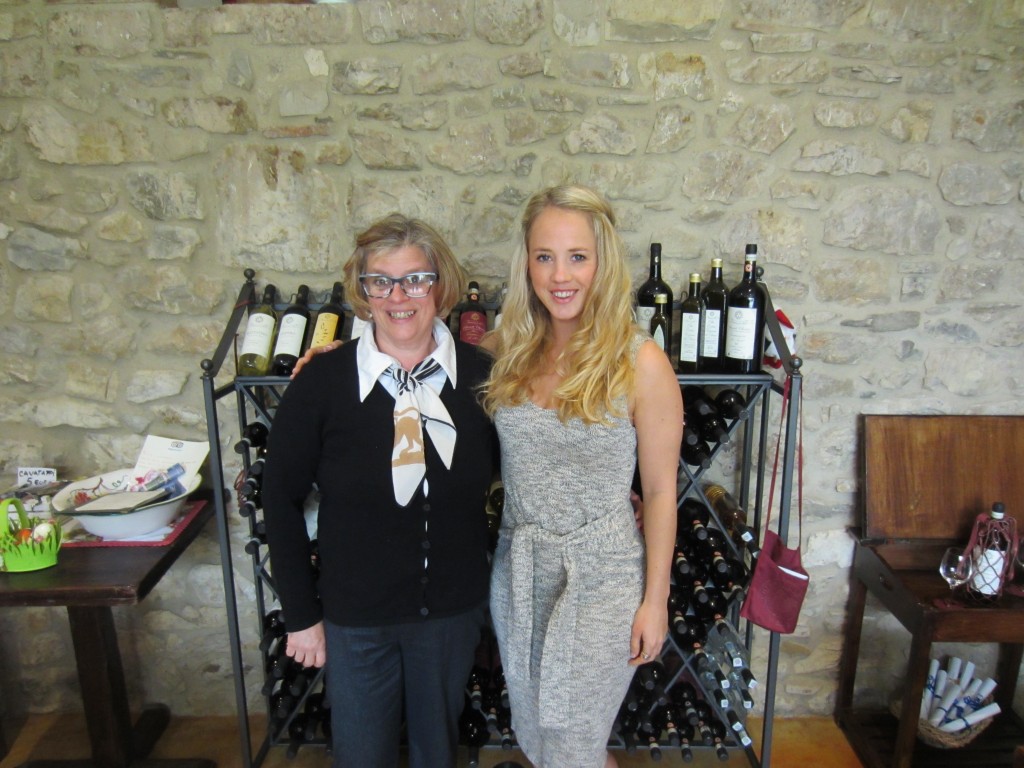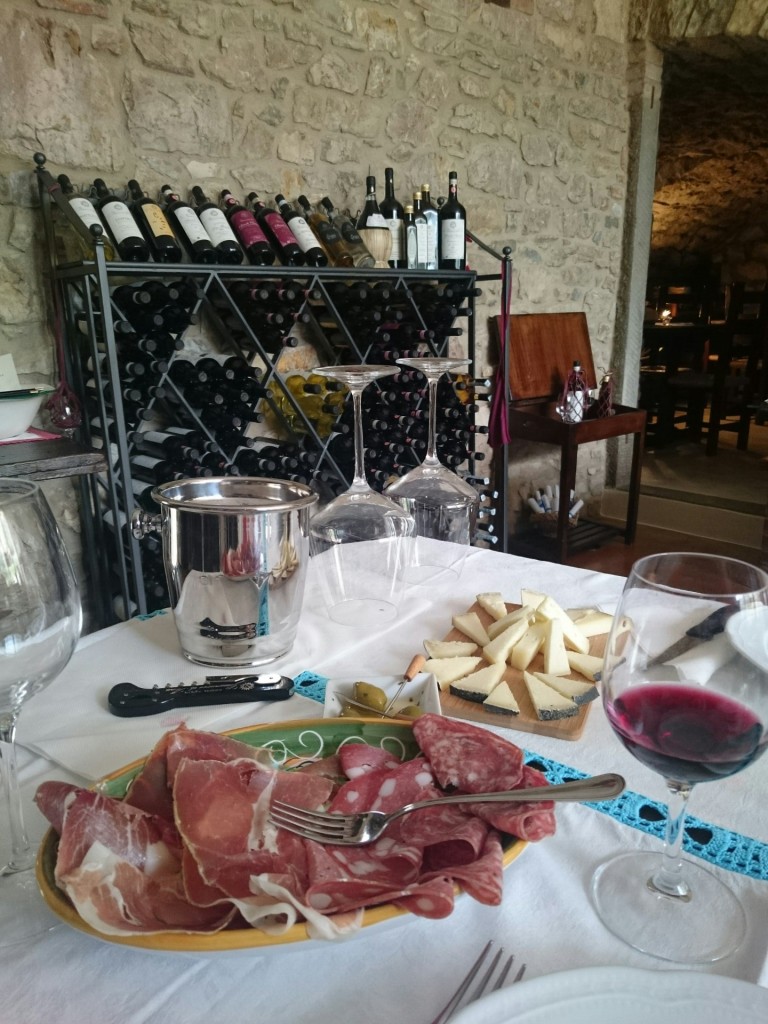
I recently returned from an epic trip to Tuscany. It’s such a beautiful area, and despite covering a lot of ground while we were there, I’m itching to go back and continue exploring. Read all about our trip here. Thanks to To Tuscany, my partner and I were treated to wine tasting at Casanuova di Ama (wondering where we stayed? Click here).
It was possibly the best thing we did the entire trip. I’m certainly no wine expert, but I do love a glass of red, and have been wine tasting in the UK a couple of times, which pales in comparison to wine tasting in Tuscany.
Even a few weeks after the trip, I swear I can still imagine the exact taste and aromatic smell of the Chianti Classico wines we sampled. I’m pretty sure I think about our wine tasting experience at least once a day, when I pass supermarket wines, pour myself a glass in the evening, or simply when I’m reminiscing about our trip.
If you are going to visit one of the world’s best wine producing regions, you may as well go wine tasting and get a real in depth introduction to Tuscan wine, and that’s what we did.
We went wine tasting at Casanuova di Ama, which, thankfully, was a fairly short walk from our apartment. I don’t know how we would have made it home alive if we were driving, we pretty much had to crawl home in a complete wine and food induced daze.
The wine tasting portions were far more than you would normally get, which was a big bonus. Each one was more like half a glass of wine than a sip or two. This is me post wine tasting, as you can see I was feeling pretty merry. As soon as we got back to the apartment, we silently agreed to take a long nap on the sun loungers outside.
I was still pretty drunk, and went into a blissful wine coma, gently snoozing out on the balcony and listening to the birds and the bees buzzing around me. Take me back to this moment…please!!! It was pure bliss. Anyway, back to the actual wine tasting. Here’s how our Tuscan wine tasting experience went down.
A bit of background
Daniela, our host, told us a little bit of history about the farm. She said that is an authentic but very small Tuscan farm, and that some of the best wines come from the smaller businesses. The farm covers around 15 hectares, and 5 of these are used as a vineyard.
They have around 2000 olive trees, and take a lot of pride in their olive oil (almost as much as their wine). She said that the farm has been in her family for years, and they all work hard to keep it running.
Apparently, the soil in this specific area (Chianti) is hard, dry, stony and much lighter than it is in and around Siena, where the soil is a brown colour and much softer. This makes it pretty much perfect for making both olive oil and wine, but not much else.
Daniela also said that it is difficult to find excellent quality olive oil in this area, and that their olive oil is an exception. We tasted it, and it was exquisite – definitely the best olive oil I have ever tasted. It’s made in a very specific way to bring out the full flavour. Instead of being filtered, it’s pressed through a granite stone and the olives are picked by hand. Shaking them doesn’t preserve the taste as effectively.
The Chianti Classico wine was born in Brolio, it was first made by a rich gentleman who made it with four grapes, two red and two white. The wine was made this way up until 2006, when regulations were changed stating that the wine had to be made with only red grapes.
At first, Daniela’s family weren’t too pleased about the change. Why change a popular recipe that has been passed down for decades? They gradually came to appreciate that wine made from red grapes only has more texture, body and colour, and that many people appreciate the stronger flavours.
Daniela still prefers the old version using both red and white, because it’s’ what she and her family have grown up with (but we liked the new one). She served us both types of wine which are detailed below. This picture shows the difference in colour.
The Food
I can only describe our experience here as some kind of epic feast. Daniela just kept bringing out more and more tasty food, and she had selected it carefully to go with the wines. She likes people to enjoy and eat her food, and obviously we didn’t let her down. We ate our hearts out. Here’s what we had over the course of two hours:
- Pecorino cheese
- Tuscan ham and meats
- A cheese and ham tart
- Mozzarella from southern Italy with tomatoes and basil
- A vegetable hummus thingy
- Warm chicken liver and veal spleen pate
- Cheese on toast with honey and balsamic
- Olives
- Bread
- Cantucci biscuits/biscotti
The wines
We had an epic wine tasting session where in total we tasted one white, five reds, a dessert wine and a liqueur. No wonder I couldn’t function very well when it came to an end. Perhaps I should have turned down the liqueur at the end, then again, perhaps not.
White wine
First we had a simple table white wine, which despite not being a fan of white, I really enjoyed. It was light and fresh and very, very drinkable. It was made from two local grapes, and they only produce a very small amount of white compared to red. Only 20% of their grapes are Chardonnay.
Comena (2012) – red
This was the old version called Comena, which apparently means ‘as it was’. This wine contains two red grapes and two white. I personally preferred the new version (below). Perhaps it’s because I don’t love white wine, and you can definitely taste the white in it.
Chianti Classico Casanuova di Ama (2014) – red
Then we tried the newer version, which was handy, because it was interesting to compare the taste between the two after being told the history. This wine has a stronger flavour and is made using the Sangiovese grape.
This grape is apparently quite hard tasting to begin with, but gets softer as it is aged, which is why the wines below were of higher quality, because they had been aged for longer. Merlot grapes for example, aren’t as harsh, and don’t need time to have a softer taste.
Chianti Classico (2012) – red
Of all the wines we liked this one best, and the Chianti Classico Riserva was our second favourite. It was tough to choose between the two. She served the older wines in bigger glasses, because it enables them to air and get more oxygen to bring out the flavour. This was very similar to the 2014, but it had a more distinctive taste.
Chianti Classico Riserva – red
Our second favourite wine was the Riserva. It’s generally more expensive as it is a higher quality wine. A smaller barrel is used and the wine needs to be preserved for at least 18 months or longer. The non Riserva Chianti Classico for example, is only kept for around 9-12 months.
Merlot (2010) – red
Before this trip, Merlot was my fave wine. Now I have had a complete turnaround. I’m a Chianti Classico fan for sure. It was great to try a Merlot as well, as it highlighted how little flavour it has compared to the Chianti wines. I think it’s my favourite in England because it’s a safe bet, it’s fairly smooth and less harsh than some of the rubbish wines you get in supermarkets.
Their Merlot is made with 50% Merlot grapes and 50% Sangiovese grapes, which makes it rather unique. It almost had a purple twinge to it, the colour and texture is totally different.
Daniela mentioned that they don’t make much Merlot at all. 60% of the vineyard is dedicated to the Sangiovese grape and the remainder is made up of Merlot, Cabernet and Chardonnay.
Vin Santo dessert wine
We also got the chance to sample a dessert wine, which apparently doesn’t contain any added sugar. It’s made with mainly white grapes and very tiny amount of red. Making it is more complicated than the other wines as the grapes need to be hung for around 3 months to make the wine sweet but dry.
They also have to use a lot more grapes than other wines. For example, for normal wine they use 100 kilograms for 750 litres of wine, and for Vin Santo, they use 100 kilograms for 250 litres of wine. We were served sweet Biscotti biscuits with this wine.
Grappa – liqueur
Lastly, we tried a very strong liqueur (40%) that’s served after coffee.
I hope you enjoyed reading about my wine tasting experience. If you want to book, click this link.

